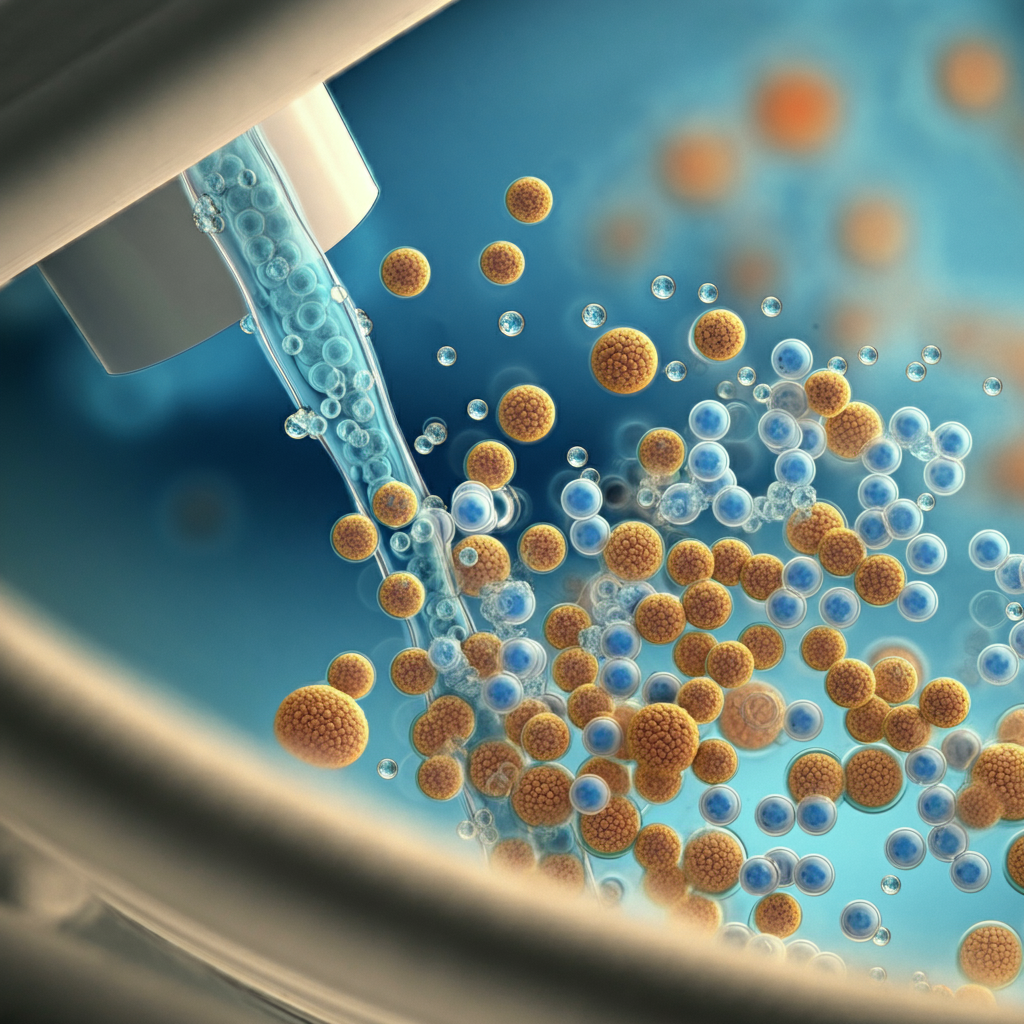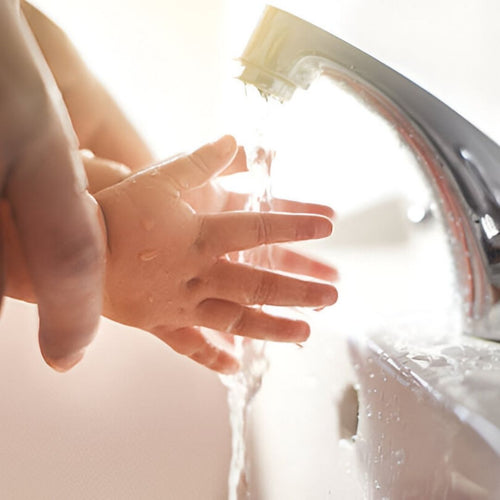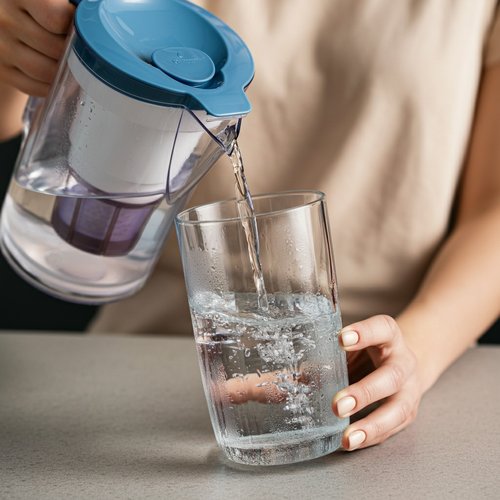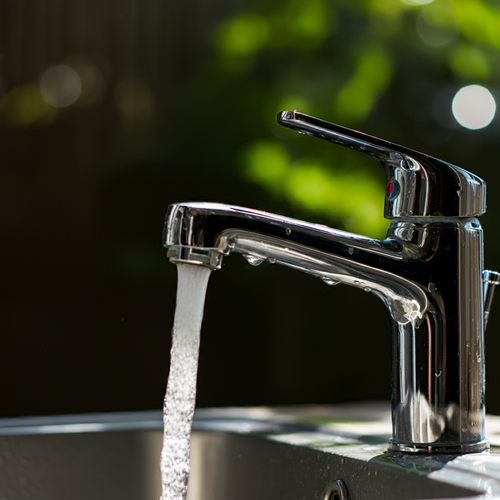Reverse osmosis filtration is a multi-stage process that removes contaminants from water by forcing it through a semipermeable membrane. At SoftPro Water Systems, we understand the importance of clean, safe drinking water, and reverse osmosis (RO) is one of the most effective ways to achieve that.
What is Reverse Osmosis?
Reverse osmosis is a water purification technology that removes contaminants by using pressure to force water molecules through a semipermeable membrane. This membrane acts as a barrier, allowing water to pass through while rejecting a wide range of impurities. To fully grasp how reverse osmosis works, let's first look at the natural process of osmosis.
Osmosis is the movement of water molecules from a region of higher water concentration (low solute concentration) to a region of lower water concentration (high solute concentration) through a semipermeable membrane. This process naturally equalizes the concentration of solutes on both sides of the membrane. In reverse osmosis, we apply pressure to the side with the higher solute concentration (the contaminated water), forcing water molecules to move against the concentration gradient and through the membrane, leaving the contaminants behind.
Unlike simple filtration, which primarily removes larger particles, SoftPro RO Filters can remove dissolved substances that other methods miss. It's also different from distillation, which involves boiling water and collecting the condensed steam. Reverse osmosis is a more energy-efficient and cost-effective method for purifying water in many applications.
Reverse osmosis has a wide range of applications, from home water filtration systems to large-scale industrial processes and even desalination plants. It's used to purify drinking water, treat wastewater, and produce ultrapure water for various industries.
The technology behind reverse osmosis has its roots in the 1950s, with significant advancements made in the 1960s by researchers at the University of California, Los Angeles. These advancements led to the development of practical SoftPro RO membranes, making the technology viable for widespread use.
Stages of Reverse Osmosis Filtration
A typical reverse osmosis system consists of several stages, each designed to target specific types of contaminants and protect the system's components. Let's explore these stages in detail:
Stage 1: Sediment Filtration
The first stage of reverse osmosis filtration involves a sediment filter. This filter is designed to remove larger particles from the water, such as dirt, sand, rust, and silt. These particles can damage or clog the SoftPro RO membrane and other system components, reducing efficiency and lifespan.
Sediment filters act as a physical barrier, trapping these larger particles within their porous structure. The pore size of the filter determines the size of particles it can remove. Common types of sediment filters include spun polypropylene filters and pleated filters. Spun polypropylene filters are made from melted polypropylene fibers that are spun and blown onto a core. Pleated filters, on the other hand, have a larger surface area due to their pleated design, allowing for higher flow rates and longer filter life.
Stage 2: Carbon Filtration
The second stage utilizes a carbon filter, which plays a crucial role in improving the quality of the water. Carbon filters use activated carbon, a highly porous material with a large surface area, to remove chlorine, chloramines, volatile organic compounds (VOCs), and other impurities that affect the taste and odor of water.
The activated carbon in these filters works through a process called adsorption, where contaminant molecules are attracted to and held onto the surface of the carbon. This effectively removes chlorine, which can damage the SoftPro RO membrane, and improves the overall taste and smell of the water.
There are two main types of carbon filters: granular activated carbon (GAC) filters and carbon block filters. GAC filters consist of loose granules of activated carbon, while carbon block filters are made from a solid block of compressed carbon. Carbon block filters generally have a higher density and can remove smaller particles compared to GAC filters.
Stage 3: Reverse Osmosis Membrane
The heart of the reverse osmosis system is the SoftPro RO filters membrane. This is a semi-permeable membrane with tiny pores that allow water molecules to pass through but block dissolved salts, minerals, and other contaminants. The SoftPro RO Filters membrane is responsible for removing a wide range of impurities, including heavy metals like lead and arsenic, pesticides, herbicides, and microorganisms.
The effectiveness of an SoftPro RO Filters membrane is measured by its salt rejection rate, which indicates the percentage of dissolved salts it can remove. High-quality SoftPro RO filters membranes typically have a salt rejection rate of 95% or higher.
There are different types of SoftPro RO membranes, with thin-film composite (TFC) membranes being the most common in residential applications. TFC membranes consist of multiple layers, including a thin film polyamide layer that provides high rejection rates and good water flow.
Stage 4: Post-Filtration
After the water passes through the SoftPro RO membrane, it may go through a final stage of filtration called post-filtration. Post-filters further polish the water, improving its taste and quality. They can also add minerals back into the water or remove any remaining contaminants that may have passed through the membrane.
One common type of post-filter is a carbon block filter, similar to the one used in the pre-filtration stage. This filter removes any residual chlorine or VOCs, ensuring the water tastes fresh and clean. Another type is a remineralization filter, which adds beneficial minerals like calcium and magnesium back into the water. This can improve the taste and health benefits of the water, as SoftPro RO filters removes many naturally occurring minerals.
What Does Reverse Osmosis Remove?
Reverse osmosis is highly effective at removing a wide range of contaminants from water, including:
- Heavy Metals: Lead, arsenic, mercury, cadmium, and chromium
- Dissolved Salts: Sodium, chloride, calcium, magnesium
- Pesticides and Herbicides: Atrazine, glyphosate, and other agricultural chemicals
- Microorganisms: Bacteria, viruses, protozoa
- Other Contaminants: Fluoride, nitrates, sulfates, chlorine, chloramines
According to the Water Quality Association (WQA), SoftPro RO Filters systems can remove up to 99% of dissolved salts and minerals from water. The Environmental Protection Agency (EPA) also recognizes reverse osmosis as an effective method for reducing contaminants like arsenic, lead, and microbial cysts.
Removing these contaminants provides numerous health and practical benefits. For example, reducing heavy metals protects against potential health problems, while removing chlorine and chloramines improves the taste and odor of water. SoftPro RO Filters can also help prevent scale buildup in appliances and plumbing fixtures, extending their lifespan.
Choosing the Right SoftPro RO System
Selecting the right reverse osmosis system for your home depends on several factors, including your water quality, household size, budget, and specific needs.
- Water Quality: If your water has high levels of contaminants, you'll need a system with a high rejection rate and possibly additional filtration stages. You can obtain a water quality report from your local water supplier or have your water tested by a certified laboratory.
- Household Size: Consider the daily water consumption of your household to choose a system with an appropriate capacity.
- Budget: SoftPro RO Filters systems vary in price depending on their features, capacity, and brand. Determine your budget and explore options within that range.
- Specific Needs: If you're concerned about the demineralization of water, consider a system with a remineralization filter. If space is limited, a countertop SoftPro RO Filters system might be a better option than an under-sink model.
There are different types of SoftPro RO Filters systems available:
- Countertop SoftPro RO Systems: These compact systems sit on your countertop and are ideal for smaller households or apartments.
- Under-Sink SoftPro RO Systems: These systems are installed under your sink and provide a dedicated faucet for filtered water. They are suitable for larger households and offer higher capacity.
- Whole-House SoftPro RO filters Systems: These systems are installed on your main water line and provide filtered water to your entire home. They are more expensive but offer the convenience of having purified water at every tap.
When choosing an SoftPro RO Filters system, look for products that are certified by NSF International. NSF certification ensures that the system meets strict standards for contaminant reduction, material safety, and structural integrity. The Water Quality Association (WQA) also provides Gold Seal certification for SoftPro RO Filters systems that meet their performance and quality standards.
At SoftPro Water Systems, we offer a range of high-quality SoftPro RO filters systems to meet your specific needs. Contact us for a personalized consultation and let our experts help you choose the perfect system for your home. You can learn more about our products and services on our website: www.softprowatersystems.com for SoftPro Water Systems.
Maintaining Your SoftPro RO Filters System
Proper maintenance is essential to ensure the optimal performance and longevity of your reverse osmosis system. Regular maintenance involves replacing filters, cleaning the membrane, and periodic professional servicing.
- Filter Replacement: The frequency of filter replacement depends on the type of filter, water usage, and water quality. Sediment filters typically need to be replaced every 6-12 months, while carbon filters may last 6-12 months. The SoftPro RO membrane itself has a longer lifespan, typically 2-3 years, but it's important to monitor its performance and replace it when necessary.
- Membrane Cleaning: While the SoftPro RO membrane is designed to last for a couple of years, it can become fouled with contaminants over time, reducing its efficiency. Regular cleaning with a specialized membrane cleaner can help extend its lifespan. The frequency of cleaning depends on water quality and use, but it's generally recommended to clean the membrane every 6-12 months.
- Professional Servicing: Even with regular filter replacements and membrane cleaning, it's recommended to have your SoftPro RO Filters system professionally serviced every 1-2 years. A qualified technician can inspect the system for any issues, perform a thorough cleaning, and replace any worn-out parts. This helps ensure the system continues to operate efficiently and provide safe, purified water.
Beyond the Basics: Optimizing Your SoftPro RO System
While the standard four stages of SoftPro RO Filters filtration are highly effective, there are additional steps you can take to further optimize your system and enhance the quality of your water:
- UV Sterilization: Adding a UV sterilizer to your SoftPro RO system provides an additional layer of protection against microorganisms. UV light effectively kills bacteria and viruses that may have passed through the membrane, ensuring the water is safe for consumption.
- Remineralization: As mentioned earlier, SoftPro RO Filters removes many natural minerals from water. While this is beneficial for removing harmful contaminants, it can also cause water that tastes flat or bland. Adding a remineralization filter after the SoftPro RO membrane adds back beneficial minerals like calcium and magnesium, improving the taste and health benefits of the water.
- Alkaline Filter: An alkaline filter can be added to increase the pH of the water, making it more alkaline. Some people believe that alkaline water has various health benefits, although more research is needed in this area.
The Importance of Water Quality Testing
Regular water quality testing is crucial to ensure your SoftPro RO Filters system is functioning correctly and your water is safe to drink. Testing can identify any contaminants that may be present in your water, allowing you to adjust your filtration system accordingly.
You can have your water tested by a certified laboratory or use a home water testing kit. Testing for common contaminants like bacteria, lead, and nitrates is recommended, especially if you have concerns about your water source.
Reverse Osmosis and Sustainability
One common concern about reverse osmosis is water waste. SoftPro RO Filters systems produce wastewater as part of the filtration process, which can be a concern for those who are environmentally conscious. However, advancements in SoftPro RO filters technology have led to the development of more efficient systems that minimize water waste.
Some newer SoftPro RO systems feature a permeate pump, which increases water pressure and reduces the amount of wastewater produced. Other systems use a tankless design, eliminating the need for a storage tank and reducing water waste associated with tank drainage.
Purifying Your World: Understanding Reverse Osmosis
Reverse osmosis stands as a powerful and efficient water purification method, removing a wide spectrum of contaminants—from visible sediment to dissolved impurities invisible to the naked eye. The process, a marvel of modern engineering, relies on a multi-stage system where each component plays a vital role:
- Sediment filters act as the first line of defense, capturing larger particles and protecting the system's delicate components.
- Carbon filters, employing the power of adsorption, remove chlorine, improve taste, and further safeguard the heart of the system—the SoftPro RO membrane.
- This semi-permeable membrane, the cornerstone of the process, rejects dissolved salts, heavy metals, and other impurities, ensuring water purity reaches 95% or higher.
- Post-filters provide the final polish, refining taste, adding beneficial minerals, and ensuring the water that flows from your tap is clean, refreshing, and safe.
Beyond its core function, reverse osmosis contributes to sustainability with advancements like permeate pumps and tankless designs minimizing water waste. Regular maintenance, including filter replacement and membrane cleaning, ensures the longevity and optimal performance of your SoftPro RO Filters system system.
Water quality testing remains crucial, empowering you with knowledge about your water's composition and guiding informed decisions about your filtration needs. Whether you opt for a countertop, under-sink, or whole-house system, reverse osmosis offers a path to cleaner, healthier water, transforming your home and enhancing your well-being.
Take the next step towards purified water today! Contact us at SoftPro Water Systems, your trusted provider of water purification solutions for a personalized consultation and discover the perfect reverse osmosis system for your home.

















![Aldex Premium 10% Cross Link Resin for Water Softener [High Capacity]-SoftPro® Water Systems](http://www.softprowatersystems.com/cdn/shop/files/Aldex_10_Cross_Link_Resin_Premium_High_Capacity_for_Water_Softener_600x.jpg?v=1735853599)























